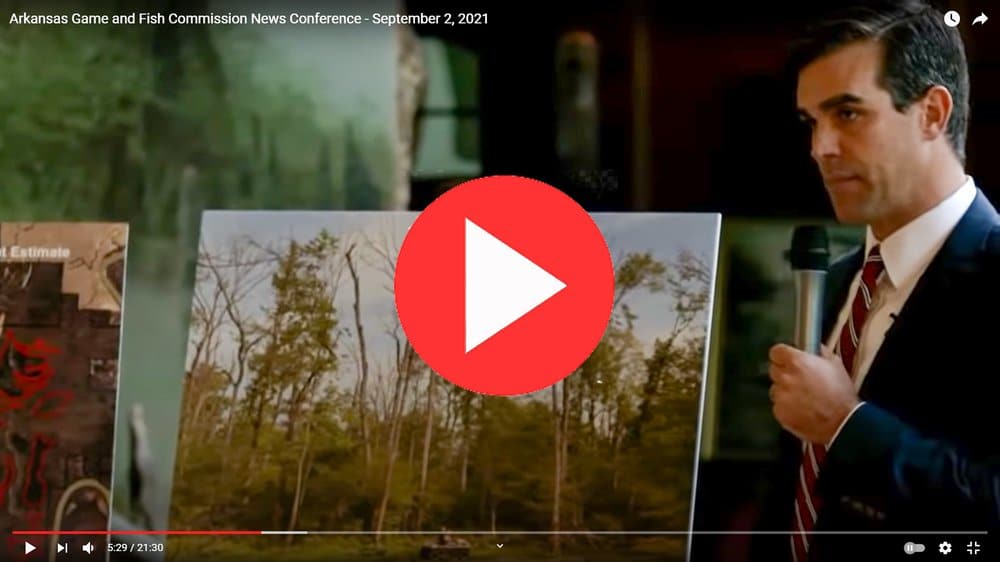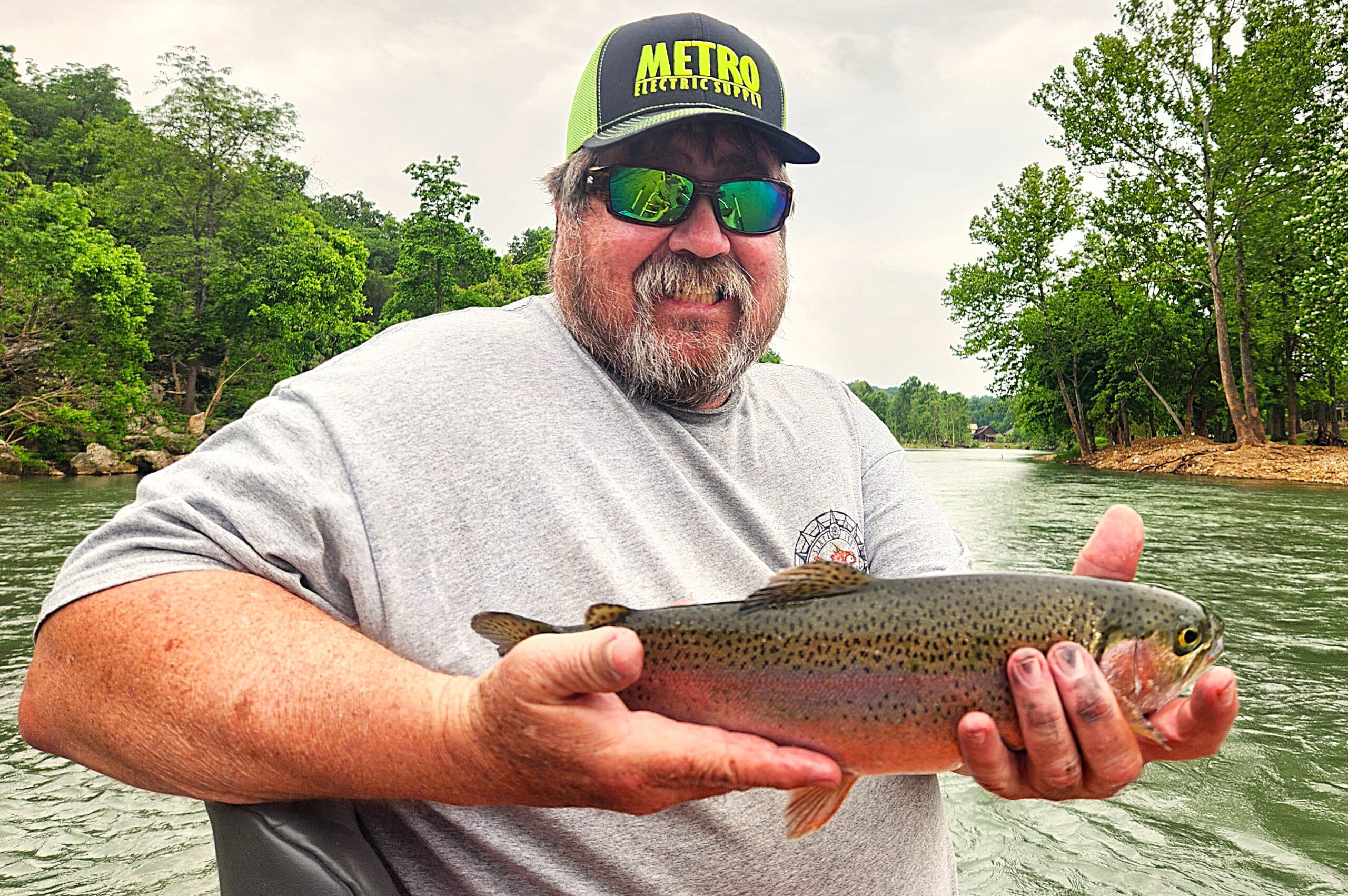Changes to east Arkansas hunting areas planned to save duck habitat
ON 09-08-2021
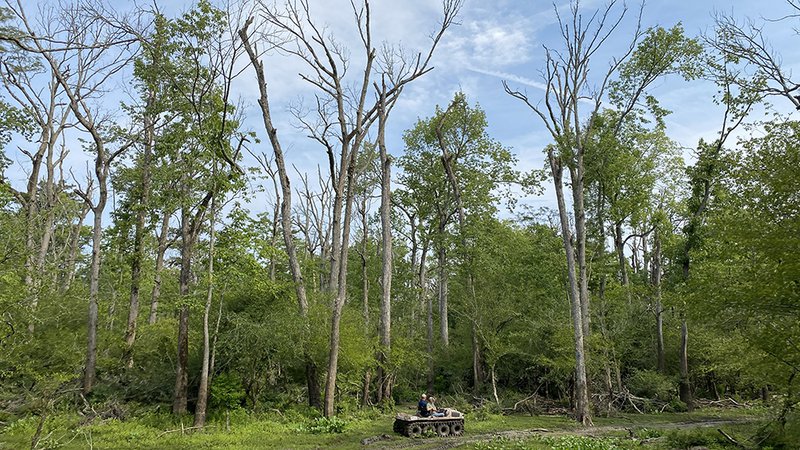
Sept. 8, 2021
Randy Zellers
Assistant Chief of Communications
LITTLE ROCK — Arkansas Game and Fish Commission Director Austin Booth announced last Thursday at a special press conference that the AGFC will make changes to existing water management schedules on three of Arkansas’s popular wildlife management areas to protect critical habitat for wintering waterfowl.
Henry Gray Hurricane Lake WMA, George H. Dunklin Jr. Bayou Meto WMA and Earl Buss Bayou DeView WMA all will see changes in water management beginning with the 2021-22 waterfowl wintering period. All of these changes are part of the Commission’s efforts to prevent further stress to valuable red oak species on traditionally flooded bottomland hardwood forests and promote regeneration of this valuable red oak component.
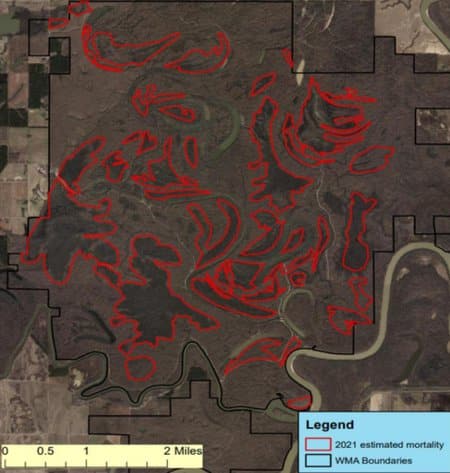
Henry Gray Hurricane Lake WMA near Bald Knob saw a massive die-off of hardwood trees beginning in 2018 within its southern greentree reservoir, an area historically flooded for ducks during waterfowl season. The trees, which had been showing signs of stress, succumbed to excessive flooding during the growing season in multiple years. Even though gates stay open outside of fall and winter, extremely wet years saw high levels of rainfall and high water levels throughout the White River system that kept water on trees throughout the growing season. The AGFC immediately began leaving the gates to the south greentree reservoir open year-round to relieve additional stress that could be caused by winter flooding. But that was only the first step in the long process of restoring Henry Gray Hurricane Lake WMA.
This year the Glaise Creek water-control structure that intentionally holds water on the northern GTR, and also influences water levels in the former south GTR, will be left open as well, to further promote the flow of water through the WMA. This is being done in conjunction with major infrastructure work being performed on the area.
A water-control structure and dirt plugs along the road to Mallard Pond are being removed. The road essentially acted as a levee to hold water in the former southern GTR, but the design needs changes to help save the waterfowl habitat on Hurricane Lake. The AGFC provided $1.7 million with $100,000 coming from Ducks Unlimited and a $1 million North American Wetlands Conservation Act grant completing the needed funds to complete this phase of the project. The completed design should help water move through the WMA and out into the Little Red River on the other side of the road.
“In 2022, the Arkansas Game and Fish Commission plans to replace the water control structure that we are leaving open this year. It will be replaced with [the framework for] a much larger structure that will let more water flow through the area.”
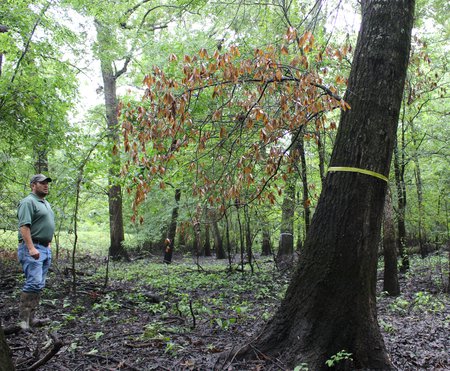
Booth said conditions immediately preceding the die-off in Henry Gray Hurricane Lake WMA were beginning to be seen in portions of Bayou Meto’s greentree reservoirs near DeWitt as well. This has prompted water management changes at this famous duck-hunting area as well. For the 2021-22 wintering period, area managers will only hold water artificially at 179 MSL, a foot lower than historically flooded levels. During the 2022-23 season, managers will reduce the managed water level another half foot, keeping the maximum artificial flood level at 178.5 MSL during winter.
According to Brad Carner, chief of wildlife management at the AGFC, the changes may mean as much as 1,857 acres of traditionally flooded areas without managed water during the 2021-22 season and even more area affected during the 2022-23 duck season. But these changes are necessary to prevent further decline and a possible die-off at Bayou Meto as well.
“The goal with Bayou Meto is to prevent Bayou Meto from turning into Hurricane,” Booth said.
AGFC staff are working to clear boat lanes and access points in Bayou Meto and will work during the offseason during 2022 to improve access to help hunters adjust to the lower water levels required to protect the habitat that has made the area a bucket-list destination for many in the duck-hunting world.
At Earl Buss Bayou DeView WMA, the Thompson Tract greentree reservoir also will be allowed to rise and fall naturally without the gates being operated beginning with the 2021-22 season. Instead of saving stressed trees, the action at this greentree reservoir is an effort to help the next generation of forest.
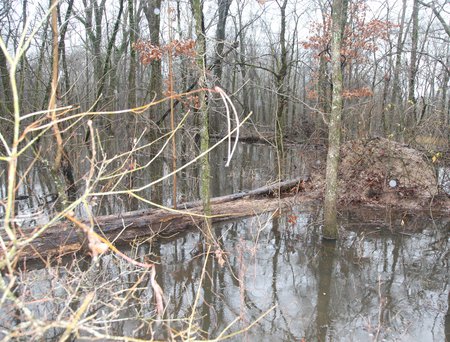
“Forest management practices in 2019 opened up the canopy of that forest and allowed sunlight to reach the forest floor,” Carner said. “We’ve seen an excellent crop of willow oaks sprout from that effort. Logging being conducted in Bayou DeView will open more forest up for this regeneration to create the next forest and benefit ducks and other wildlife. We need to allow water to flow freely through the area to protect those young trees that will one day be the forest our children and grandchildren will hunt.”
Booth stressed that the AGFC’s actions do not mean these areas will not flood naturally. During the last few years, water still entered Hurricane Lake WMA’s duck hunting areas when the White River reached 24 to 25 feet high at the USGS gauge in Augusta.
Booth added that as long as sufficient rain falls throughout the watershed at Bayou Meto, the area will fill to that 179 MSL mark. Additional rainfall during duck season in the WMA’s watershed will naturally flood even more acres within the WMA and then the waters will recede back to 179. He also pointed out that the WMA is 33,000 acres, but the watershed that feeds the WMA spans 750,000 acres.
“Any time that area gets rain, all that rain is coming to Bayou Meto. That water will pulse up over 179 feet, and the public opportunity will pulse up with it.”
Booth also reassured Arkansas hunters that the actions being taken are not abandoning Arkansas’s rich waterfowl heritage, but investments to maintain and enhance it.
“We are not pulling the plug on greentree reservoirs and the hunting experience they have brought Arkansans for years and years,” Booth said. “We are doubling down on them. To ensure that these GTRs are around for the next generation of Arkansans, the time to act is now.
“What Arkansans expect of this agency is to be accountable, and to control the things we can control and that is exactly what we are doing with this decision,” Booth said. “We’re controlling the aspects of the timber health that we can control right now for the benefit of our trees right now so that when we make progress on the things that are outside of our control, our trees will live to see it.”
A video of the press conference is available at https://www.youtube.com/watch?v=_wvR0kA6hcs&t
Recent News
Subscribe to Our Weekly Newsletter E-mails
Don’t miss another issue. Sign up now to receive the AGFC Wildlife Weekly Newsletter in your mailbox every Wednesday afternoon (Waterfowl Reports are published weekly during waterfowl season and periodically outside the season). Fishing Reports arrive on Thursdays. Fill in the following fields and hit submit. Thanks, and welcome!

